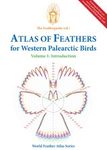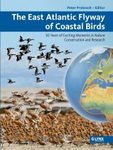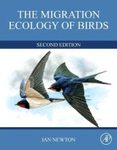Rufen Sie uns an (9:30 - 18:00 DE)
+44 (0) 1803 86 59 13International
+44 (0) 1803 86 59 13Brauchen Sie Hilfe?
HilfeDatenerfassung und Monitoring
Feldführer und Naturgeschichte
Akademische und professionelle Bücher
- Evolutionary Biology
- Evolution
- Human Evolution & Anthropology
- Cladistics, Phylogeny & Taxonomy
- View All
British Wildlife
British Wildlife is the leading natural history magazine in the UK, providing essential reading for both enthusiast and professional naturalists and wildlife conservationists. Published eight times a year, British Wildlife bridges the gap between popular writing and scientific literature through a combination of long-form articles, regular columns and reports, book reviews and letters.
Conservation Land Management
Conservation Land Management (CLM) ist ein Mitgliedermagazin und erscheint viermal im Jahr. Das Magazin gilt allgemein als unverzichtbare Lektüre für alle Personen, die sich aktiv für das Landmanagement in Großbritannien einsetzen. CLM enthält Artikel in Langform, Veranstaltungslisten, Buchempfehlungen, neue Produktinformationen und Berichte über Konferenzen und Vorträge.





![Lebensraum Federkleid: Federn und Federbewohner Heimischer Vögel [Plumage as Habitat: Feathers of Domestic Birds and their Parasitic Residents] Lebensraum Federkleid: Federn und Federbewohner Heimischer Vögel [Plumage as Habitat: Feathers of Domestic Birds and their Parasitic Residents]](http://mediacdn.nhbs.com/jackets/jackets_resizer_xlarge/22/225536.jpg?height=620)
![Lebensraum Federkleid: Federn und Federbewohner Heimischer Vögel [Plumage as Habitat: Feathers of Domestic Birds and their Parasitic Residents]](http://mediacdn.nhbs.com/jackets/jackets_resizer/22/225536.jpg)
![Lebensraum Federkleid: Federn und Federbewohner Heimischer Vögel [Plumage as Habitat: Feathers of Domestic Birds and their Parasitic Residents]](http://mediacdn.nhbs.com/jackets/jackets_resizer/22/225536_1.jpg)
![Lebensraum Federkleid: Federn und Federbewohner Heimischer Vögel [Plumage as Habitat: Feathers of Domestic Birds and their Parasitic Residents]](http://mediacdn.nhbs.com/jackets/jackets_resizer/22/225536_2.jpg)
![Lebensraum Federkleid: Federn und Federbewohner Heimischer Vögel [Plumage as Habitat: Feathers of Domestic Birds and their Parasitic Residents]](http://mediacdn.nhbs.com/jackets/jackets_resizer/22/225536_3.jpg)
![Lebensraum Federkleid: Federn und Federbewohner Heimischer Vögel [Plumage as Habitat: Feathers of Domestic Birds and their Parasitic Residents]](http://mediacdn.nhbs.com/jackets/jackets_resizer/22/225536_4.jpg)
![Lebensraum Federkleid: Federn und Federbewohner Heimischer Vögel [Plumage as Habitat: Feathers of Domestic Birds and their Parasitic Residents]](http://mediacdn.nhbs.com/jackets/jackets_resizer/22/225536_5.jpg)
![Lebensraum Federkleid: Federn und Federbewohner Heimischer Vögel [Plumage as Habitat: Feathers of Domestic Birds and their Parasitic Residents]](http://mediacdn.nhbs.com/jackets/jackets_resizer/22/225536_6.jpg)
















![Das Herbarium des Felix Platter: Die Älteste Wissenschaftliche Pflanzensammlung der Schweiz [The Herbarium of Felix Platter: The Oldest Scientific Plant Collection of Switzerland]](http://mediacdn.nhbs.com/jackets/jackets_resizer_medium/23/230349.jpg?height=150&width=120)

![Marder, Iltis, Nerz und Wiesel: Kleine Tiere, große Jäger [Martens, Polecats, Minks And Weasels: Small Animals, Big Hunters]](http://mediacdn.nhbs.com/jackets/jackets_resizer_medium/23/230635.jpg?height=150&width=105)
![Wimperfledermaus, Bechsteinfledermaus und Mopsfledermaus: Einblicke in die Lebensweise Gefährdeter Arten in Baden-Württemberg [Geoffroy's Bat, Bechstein's Bat and Barbastelle: Insights into the Lives of Endangered Species in Baden-Württemberg]](http://mediacdn.nhbs.com/jackets/jackets_resizer_medium/21/219903.jpg?height=150&width=103)
![Jugendstadien der Heuschrecken der Schweiz [Juvenile Stages of the Grasshoppers of Switzerland]](http://mediacdn.nhbs.com/jackets/jackets_resizer_medium/25/252131.jpg?height=150&width=103)
![Flora Helvetica: Illustrierte Flora der Schweiz [Flora Helvetica: Illustrated Flora of Switzerland]](http://mediacdn.nhbs.com/jackets/jackets_resizer_medium/26/264404.jpg?height=150&width=101)
![Libellen Europas: Der Bestimmungsführer [Field Guide to the Dragonflies of Britain and Europe]](http://mediacdn.nhbs.com/jackets/jackets_resizer_medium/25/251176.jpg?height=150&width=95)
![Flora Vegetativa: Ein Bestimmungsbuch für Pflanzen der Schweiz im Blütenlosen Zustand [Flora Vegetativa: An Identification Book for Plants in Switzerland without Flowers]](http://mediacdn.nhbs.com/jackets/jackets_resizer_medium/24/249633.jpg?height=150&width=98)
![Schmetterlinge der Alpen: Der Bestimmungsführer für alle Arten [Butterflies of the Alps: Identification Guide to All Species]](http://mediacdn.nhbs.com/jackets/jackets_resizer_medium/21/210853.jpg?height=150&width=95)

![Farne, Schachtelhalme und Bärlappe: Der Naturführer zu den Farnpflanzen Mitteleuropas [Ferns, Horsetails and Clubmosses: The Field Guide to the ferns of Central Europe]](http://mediacdn.nhbs.com/jackets/jackets_resizer_medium/25/254162.jpg?height=150&width=104)
![Die Geheimnisvolle Welt der Pilze: Das Natur-Mitmachbuch für Kinder [The Mysterious World of Fungi: The Nature Activity Book for Children]](http://mediacdn.nhbs.com/jackets/jackets_resizer_medium/22/225586.jpg?height=150&width=136)